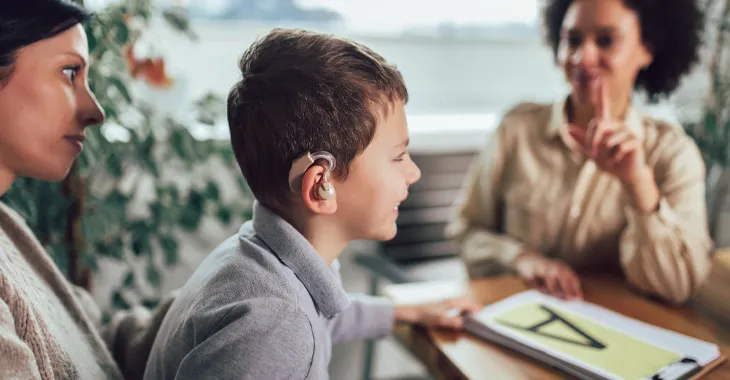More than just a blog. Connect . Educate. Learn. Collaborate.

The ability to communicate is a life skill. Hearing loss is the world's 2nd largest impairment. It is easy for people to feel like they are missing out on their quality of life after getting diagnosed with hard hearing or complete hearing loss. The good news is that there are other ways people with hearing loss can make it up to their life’s quality.
This blog here discusses the tips for better communication, speech and language development in children, hearing loss impacts, exercises to boost hearing, medical solutions such as undergoing a cochlear implant. Stay with until the end of the blog to learn more.
How hearing loss impacts a person?
Sudden hearing loss, irrespective of the severity, can impact a person’s life in many ways. Children with hearing loss will also face developmental issues. Here are the other ways it impacts each individual.
● Personal: Reduced interaction at school or at the workplace followed by extreme social withdrawal.
● Societal:Besides the conscious efforts to participate less in societal life, some children are subjected to abuse at schools. This can have serious consequences on the child’s development if such issues are not addressed promptly.
● Emotional:Difficulty in sharing what they feel or going through is a major problem. In addition, the person’s self-esteem, self-worth and confidence levels are severely dropped.
With the help of ENT specialists, hearing aids, and occupational specialists, many parents can still be able to help their children to have a better quality of life. This applies for adults as well.
How to communicate with people with hearing loss?
According to a survey, words will have only 40% of impact in communication in absence of body language. Effective communication is a good mixture of body language and verbal language. Communication, by all means, is not all about speaking and hearing words. There are a whole bunch of contributing factors that deliver effective communication. These factors involve facial expressions, hand moments, body gestures, and the science of body language behind.
Be it a parent with a child diagnosed with hearing loss or an adult with hard hearing, follow these tips to have two-way communication.
● Face the person with whom you are communicating - It is important to have a face-to-face stance with the person. Visual access is key to effective communication. Also, ensure the surrounding has less background noise and enough lighting to see lips, facial expressions, and observe body language.
● Use less words and more body language - Practice using only the key words in your intended communication. Utter them clearly and try to use your hands to make sense of your words. It takes practice but works greatly while communicating.
● Rephrase than repeat - It’s a common mistake everybody makes while communicating. If your surrounding is noise free and have enough lighting, the person with hard hearing can figure out what you are saying in most cases. If he or she could not, rephrase what you are saying rather than repeating again and again.
● Use your lips, not your voice - Many people tend to raise their voice if their meaning is not communicated. Instead of raising or exaggerating your tone, try to move your lips in accordance with the words while giving appropriate gestures.
● Maintain your eye contact - Eyes are a great deal when it comes to expressing human emotions. You can express joy, happiness, or sadness through your eyes without any difficulties. Try to keep your eye contact with your child and observe theirs too. You can read what they are feeling right now.
What are the ways to develop speech and language abilities in children?
If your child is diagnosed with hearing difficulties, it is pivotal to start a speech and language development program at the earliest. The speech-pathologists or a multidisciplinary team that includes ENT specialists, speech-pathologists, occupational therapists, audiologists, help your child in developing their communication and learning
How to find hearing loss early in children?
Each month is a milestone after a baby’s birth. Even though each child achieves milestones like looking at the direction of sound, responding to mom or dad’s voice, or being able to make different sounds for different needs, there is a time-frame for each of these milestones. Here are a few important signs you should know to find hearing loss in a child, at the earliest.
1. Birth to 3 months: Startles at sudden sounds, makes cooing noise, reacts by moving legs or hands rapidly when spoken to.
2. 4 to 6 months: Smiles or quiets when the parent is speaking to them. Stops crying after listening to their mom or dad’s voice.
3. 7 to 12 months - Looks at the direction of the sound, uses sound to get attention by making noise, or gets quite vocal with different sounds.
4. 12 to 24 months - Will be able to utter words like dada and mama, listens intently to songs or simple music, responds to simple questions like ‘where is mommy?’
It all boils down to this - the earlier you can find hearing loss in your child, the better your child can communicate. If you are observing more 3 of these signs together, reach out to your nearest ENT hospital for a general checkup.
Share This Story, Choose Your Platform!
